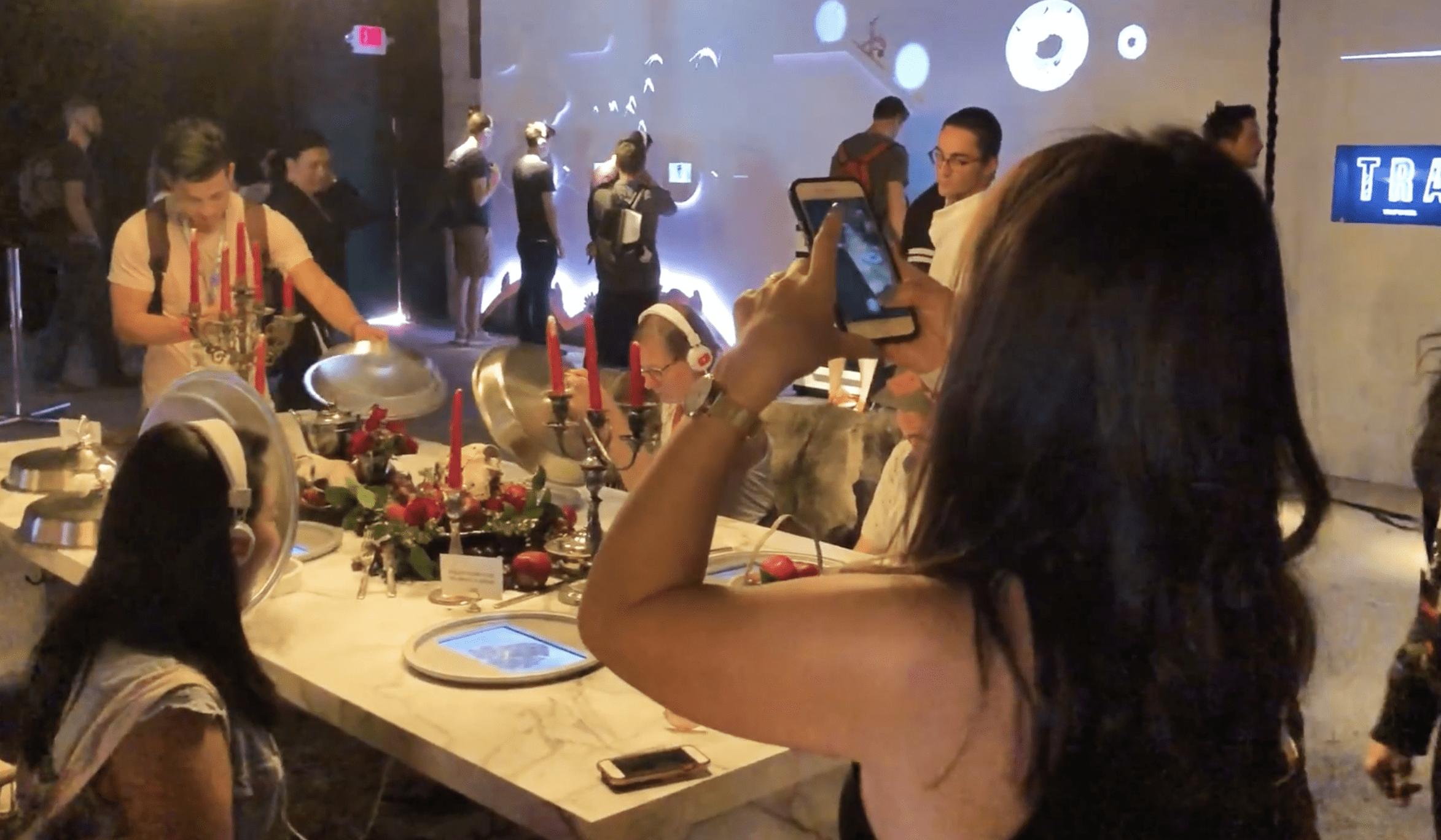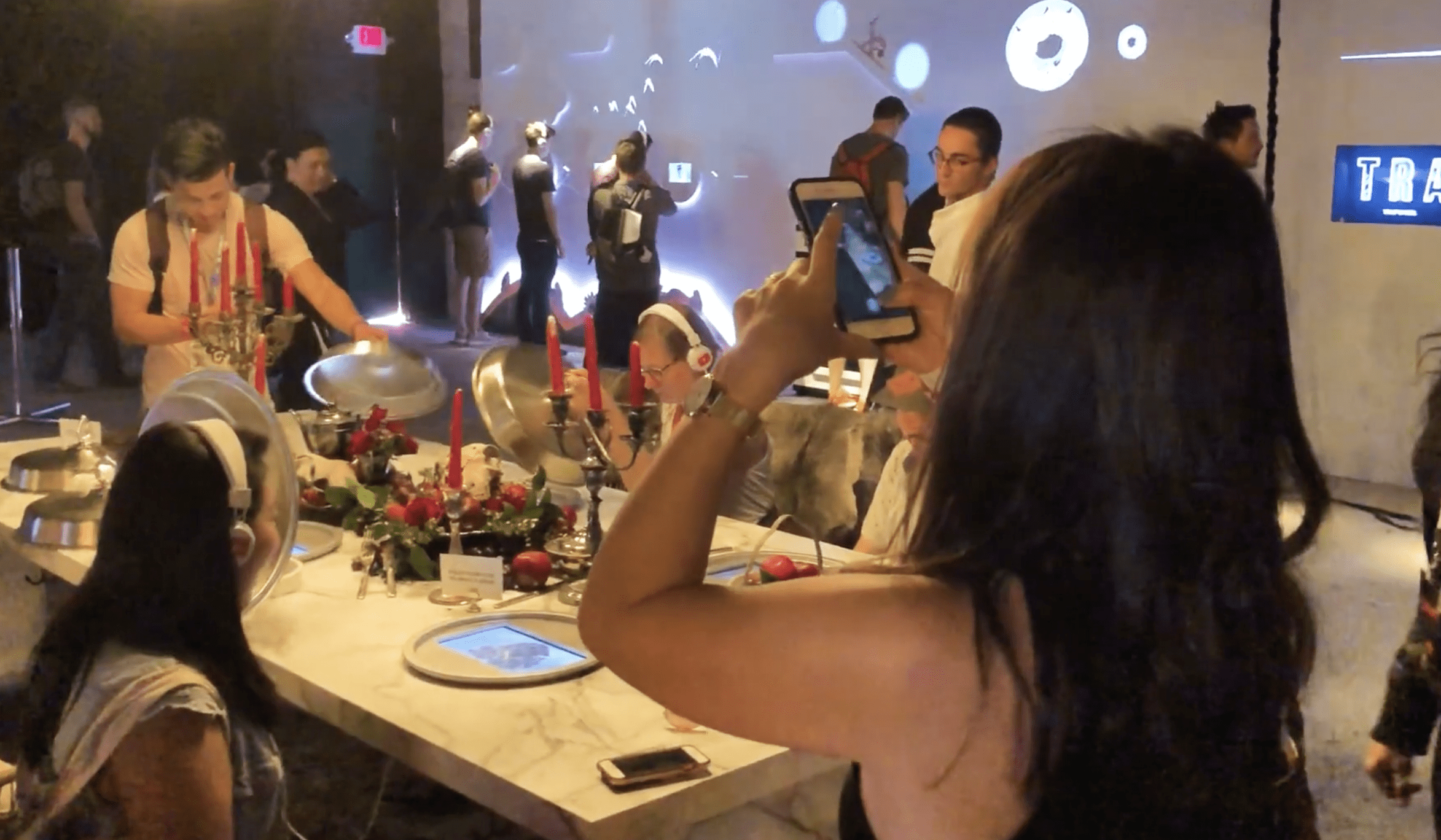How To Meet An Experience Design You Love
By Kirsten Nelson


Technology has been connecting humans since the dawn of time. Since the discovery of fire and the subsequent dinner parties that must have happened as a result, all the way up to “find your friends” on phones, we’re using the latest tools to find other humans.
That’s a long span of time. And all along the way, technology has also been used to solve the ultimate problem in human connection — finding your soulmate. Or at least someone who can be your date on national holidays (for the non-rom-com-oriented, that’s a When Harry Met Sally reference).
So in the world of sound, video, acoustics, lighting, show control, immersive media and interactivity, what innovations can be used to solve that ancient problem? That’s a question posed by the “Experienced Experiential Experiencer” David Title, who is Partner with Bravo Media. As a happily married human himself, Title has been applying his professional acumen to the somewhat heartbreaking personal problems of friends and colleagues.
It seems that particularly within a specific age bracket, people are really not finding what they want out there, even with the aid of ten zillion apps and counting. People in their mid-30s through their 40s and beyond are particularly dismayed by their experience. Yes, there are younger people missing out on the joys of romantic love, but as Title says, “That’s the live and learn part of your life, you’ve just got to go out there and make it happen.” That said, Pinterest does predict that Gen-Z is reinventing dating as we speak.
Which means that for the purposes of this experiential investigation, Title is choosing to focus on a slightly older demographic, which happens to be a blend of the formerly most-coveted marketing targets of millennials and the ridiculously trend-averse Gen-Xers (of which I myself am one).
These are people experienced in experiencing experiences, as Title might say, and they are particularly dissatisfied with what the apps have to offer. “At least here in the U.S., apps are the dominant way that people are meeting, with varying degrees of success and what seems to be a lot of frustration,” Title notes. “People are using them as a lesser of all evils or something. But it doesn’t seem like the apps are making it easier to find people that you really want to spend time with compared to the options that were available in the pre-internet era. So that makes me wonder how else might we think about all of the technologies that we have, and evolutions in our society, to address the challenge of finding people that you want to spend time with?”
With the apps failing us, there seems to be renewed interest in cultivating opportunities to meet in real life. New speed dating events and singles meetups are happening for every type of romantic persuasion. So how can we, as practitioners of real-life events in the form of concerts, museum exhibits, stadium spectacles and brand activations of every variety swoop in with our expertise and create the… killer app? But app in the sense of application, specifically the application of technology to help you get past the awkwardness and into a good conversation with someone who appeals to you romantically.
“Part of what we have been doing professionally for the last decade or so at Bravo Media has been about essentially trying to make things happen in real-world experiences by combining art with technology,” Title explains. “Our clients want to increase engagement at a trade show, or get people to be more interested in sneakers at an activation, or just, ‘How can I get a crowd of people to show up on a Tuesday?’”
Real life still offers something magical, he elaborates: “There is something visceral about being in a space in real time with other people, witnessing a real-time event with all the same molecules touching.” (The latter of which to me sounds like a very romantic idea.)
Beyond that, real life also offers a distinct advantage in the natural filtering of the type of people who will opt in to an environment or an event. The apps have a lot of filters to try to narrow the list of options, but they can’t quite guarantee those are people you’d actually want to spend time with. But if you host an event in a physical location, the social cues of that space and the interest level in the niche event happening there will help to filter even further.
As experience designers, we have unique skills to develop these niche events, and enhancing them with technological elements that match the scene. “I’ve been trying to think about this problem as my clients are my single friends who are fed up and want a better solution, and so what does that look like?” Title asks. “What roles can technology play? Are we using some form of data analysis on the people attending to help convince potential guests that they want to be there? Or is it using cameras and sensors so that people have things happening around them to engage them so that they start to play with each other? Is it manipulating light and sound to generate pheromones?”
The brainstorming starts there. And in my conversation with Title, we started to develop something that in very NYC-centric terms looks like a blend of Chelsea Market and Artechouse. So, basically a collection of spaces all decorated differently to appeal to different tastes, plus some cool projection mapping options to enhance the interactive engagement options.
From there you need to use our understanding of acoustics and the built environment a bit more. There are many rooms to build. Title lists: “You want spaces that facilitate lots of people meeting, spaces that facilitate a quiet conversation and a space that facilitates play of some kind. This is all where the technology and art piece starts to play.”
All these questions might sound as silly as a rom-com to some, but there is a professional benefit to thinking through these scenarios. “Any time you’re developing experiences, whether they’re for a pharmaceutical tradeshow or a Nike launch event, I think oftentimes those don’t land with as much impact as they could because you haven’t really spent the time to think through all of these human challenges,” Title says. “You’re making a human event. And you have to think about the human condition in relationship to all of these factors. Everything from the impact of waiting in line to the feeling that you’ve been subject to a bait and switch. All these kinds of things that can come up when you’re doing experience design. Sometimes you’re just so focused on the result that you overlook some of those factors. So I think just using this as an ongoing mental challenge is really useful for me, just personally, for how I’m looking at other projects that we’re working on.”
Stay up to date with the Dante Journal
* indicates required fields




